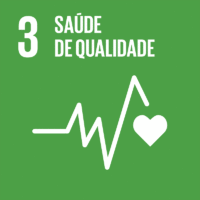Ciência_Iscte
Publicações
Descrição Detalhada da Publicação
Calcium identification and scoring based on echocardiography. An exploratory study on aortic valve stenosis
Título Revista
Journal of Personalized Medicine
Ano (publicação definitiva)
2021
Língua
Inglês
País
Suíça
Mais Informação
Web of Science®
Scopus
Google Scholar
Esta publicação não está indexada no Overton
Abstract/Resumo
Currently, an echocardiography expert is needed to identify calcium in the aortic valve, and a cardiac CT-Scan image is needed for calcium quantification. When performing a CT-scan, the patient is subject to radiation, and therefore the number of CT-scans that can be performed should be limited, restricting the patient’s monitoring. Computer Vision (CV) has opened new opportunities for improved efficiency when extracting knowledge from an image. Applying CV techniques on echocardiography imaging may reduce the medical workload for identifying the calcium and quantifying it, helping doctors to maintain a better tracking of their patients. In our approach, a simple technique to identify and extract the calcium pixel count from echocardiography imaging, was developed by using CV. Based on anonymized real patient echocardiographic images, this approach enables semi-automatic calcium identification. As the brightness of echocardiography images (with the highest intensity corresponding to calcium) vary depending on the acquisition settings, echocardiographic adaptive image binarization has been performed. Given that blood maintains the same intensity on echocardiographic images—being always the darker region—blood areas in the image were used to create an adaptive threshold for binarization. After binarization, the region of interest (ROI) with calcium, was interactively selected by an echocardiography expert and extracted, allowing us to compute a calcium pixel count, corresponding to the spatial amount of calcium. The results obtained from these experiments are encouraging. With this technique, from echocardiographic images collected for the same patient with different acquisition settings and different brightness, obtaining a calcium pixel count, where pixel values show an absolute pixel value margin of error of 3 (on a scale from 0 to 255), achieving a Pearson Correlation of 0.92 indicating a strong correlation with the human expert assessment of calcium area for the same images.
Agradecimentos/Acknowledgements
This research was funded by the Foundation for Science and Technology (FCT) through
ISTAR-IUL’s project UIDB/04466/2020 and UIDP/04466/2020.
Palavras-chave
Ultrasound images,Coronary artery disease,Echocardiograms,CT-scan,Computed tomography,Coronary artery calcium,Feature extraction,Image classification,Computer vision
Classificação Fields of Science and Technology
- Ciências da Computação e da Informação - Ciências Naturais
Registos de financiamentos
| Referência de financiamento | Entidade Financiadora |
|---|---|
| UIDB/04466/2020 | Fundação para a Ciência e a Tecnologia |
| UIDP/04466/2020 | Fundação para a Ciência e a Tecnologia |
Contribuições para os Objetivos do Desenvolvimento Sustentável das Nações Unidas
Com o objetivo de aumentar a investigação direcionada para o cumprimento dos Objetivos do Desenvolvimento Sustentável para 2030 das Nações Unidas, é disponibilizada no Ciência_Iscte a possibilidade de associação, quando aplicável, dos artigos científicos aos Objetivos do Desenvolvimento Sustentável. Estes são os Objetivos do Desenvolvimento Sustentável identificados pelo(s) autor(es) para esta publicação. Para uma informação detalhada dos Objetivos do Desenvolvimento Sustentável, clique aqui.

 English
English



